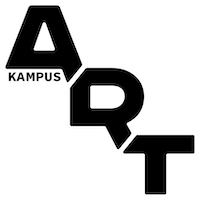Joel Danielsson & Louise Öhman: Stone is the Bone of my Mother

Joel Danielsson & Louise Öhman: Stone is the Bone of my Mother
2018, kesto 17:27
Stone is the Bone of my Mother reveals our interest within the relation between iconoclasm and animism. Recurring through the video is a tension between surfaces, and how they oscillate between being in a form and formless state and consequently the positions’ connection to it being within or outside of time.
The work started while reading about an event taking place on a Sunday mass in St Peters Cathedral in Rome, 1972. Where a 33-year old Hungarian Geologist battered with a hammer Michelangelo’s marble sculpture of the Virgin holding her dead son in her lap, the Pietà. It is reported that he, during the attack, both did see himself as Christ and Michelangelo, ready to attack the Virgin’s image—with the logical reasoning that as being eternal, he could have no mother. His use of a geologist’s hammer, provided by his previous occupation, speaks about the cognitive dissonance at the core of his perception of time, as a geologist is much aware of time, how time takes its form and demands space. Layer upon layer, year after year, and sediment to solid. For us, it takes a small eternity for marble to transform under pressure. This is all to clear for the geologist who is the witness of time under the weight of the mountain.
Stone is the Bone of my Mother follows the material that Pietà is made of—marble. From sediment to mountainside to sculpture. Marble is made when seashells, mud and sediments are pressed together at the bottom of the sea under great pressure. The marble makes possible a physical shift in positions, from formless (the sea) to form (mountain), and therefore becoming a material resource. We see images of the careful restoration after the attack with instruments and optics, people working in the mountains, we see the surface of marble, its “skin” and “veins”, a surface whose richness depends on our ability to believe in it, to go deep into it, to fall into this surface. And other images related to the effort we make to restore and keep the image of eternity alive. In the video, the see the 3D-model of this sculpture, possible to move around, where the movement gives you a sense of space. But it is a liminal space, this sculpture is floating erroneously—endlessly searching for its physical mirrored self. It is a virtual simulacrum, without tactile possibilities. Without traces of time—then also without a future.
To be alive is to be able to regenerate—to heal. A statue never heals itself without the human hand—it needs the caress of a careful preparation, sanding, carving and the precise mounting of piece by piece of shattered marble—with its marble veins carefully glued together. The instrumental light that elevates it cuts it away from time, now unable to whither with the elements, eliminating the scars of time; the sculpture is cast out from the realm of time.
Artist Statement
With their main practice within video, text and installation, Joel Danielsson and Louise Öhman have been working as an artist duo since 2014. They move through past times, with a certain emphasis on the periphery stories of history. Through their reading of these stories between fact and fiction, they often return to the form of the montage, where collisions and connections appear in the constellations of sound, images and descriptions of events. Through this montage, they let the speculative, haunting and associative forms return as images.
